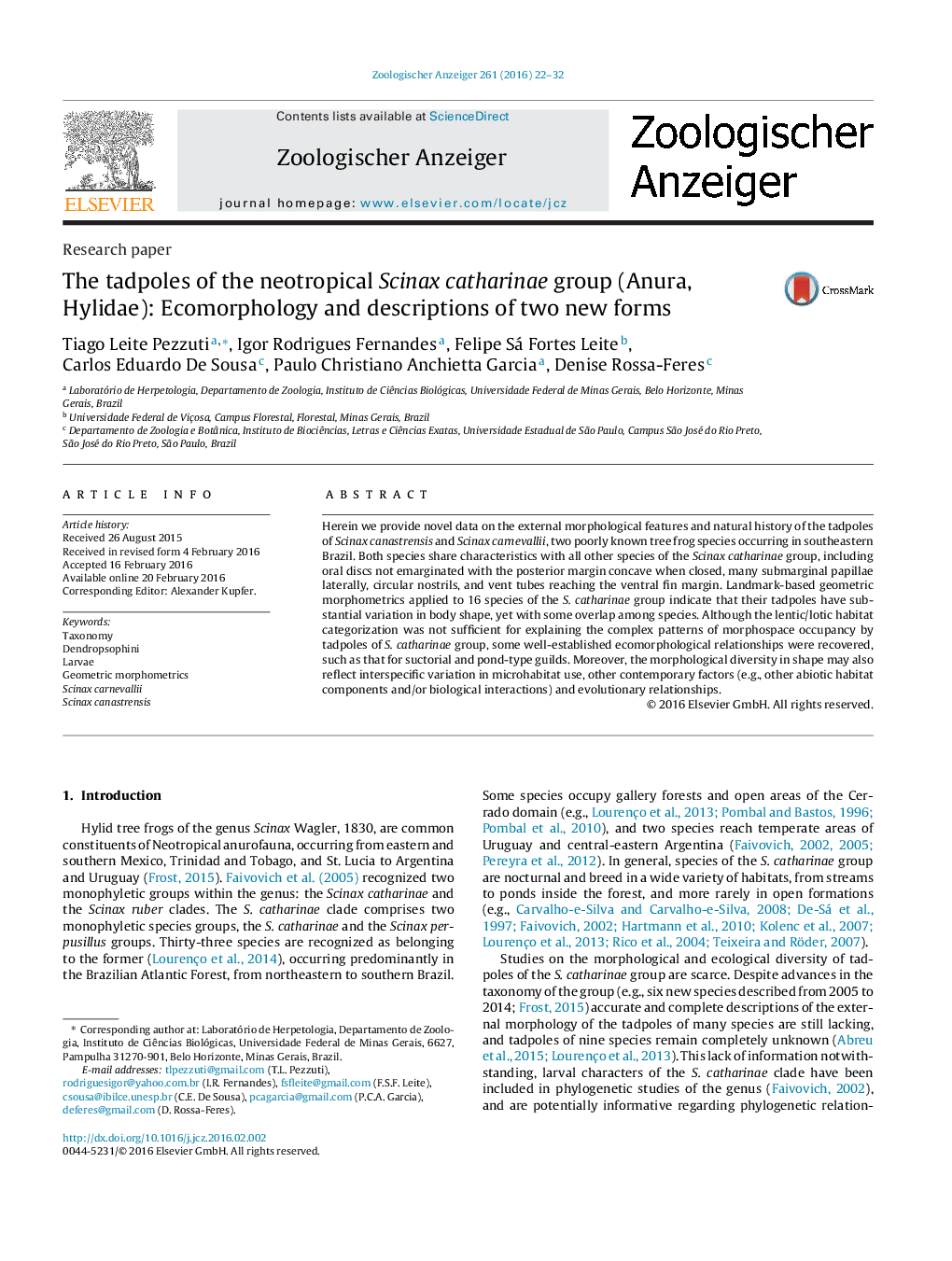| Article ID | Journal | Published Year | Pages | File Type |
|---|---|---|---|---|
| 2790485 | Zoologischer Anzeiger - A Journal of Comparative Zoology | 2016 | 11 Pages |
Herein we provide novel data on the external morphological features and natural history of the tadpoles of Scinax canastrensis and Scinax carnevallii, two poorly known tree frog species occurring in southeastern Brazil. Both species share characteristics with all other species of the Scinax catharinae group, including oral discs not emarginated with the posterior margin concave when closed, many submarginal papillae laterally, circular nostrils, and vent tubes reaching the ventral fin margin. Landmark-based geometric morphometrics applied to 16 species of the S. catharinae group indicate that their tadpoles have substantial variation in body shape, yet with some overlap among species. Although the lentic/lotic habitat categorization was not sufficient for explaining the complex patterns of morphospace occupancy by tadpoles of S. catharinae group, some well-established ecomorphological relationships were recovered, such as that for suctorial and pond-type guilds. Moreover, the morphological diversity in shape may also reflect interspecific variation in microhabitat use, other contemporary factors (e.g., other abiotic habitat components and/or biological interactions) and evolutionary relationships.
